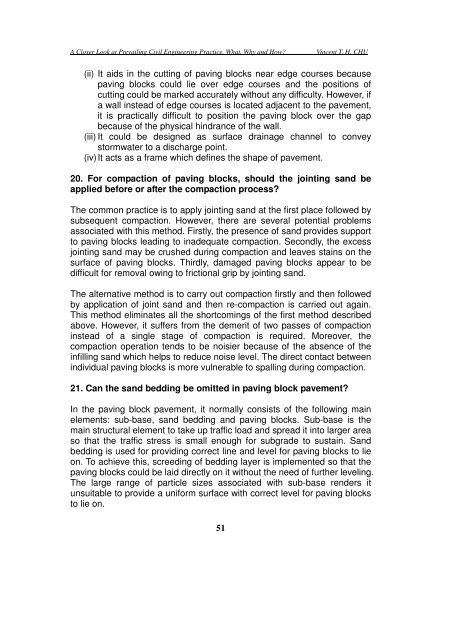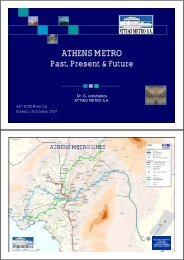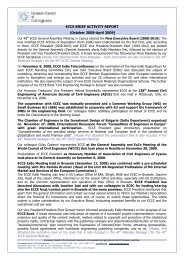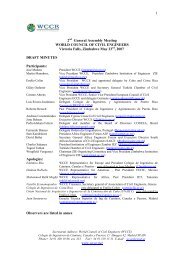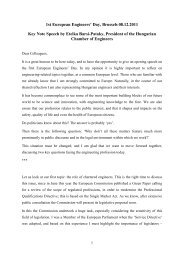A Closer Look at Prevailing Civil Engineering Practice - European ...
A Closer Look at Prevailing Civil Engineering Practice - European ...
A Closer Look at Prevailing Civil Engineering Practice - European ...
Create successful ePaper yourself
Turn your PDF publications into a flip-book with our unique Google optimized e-Paper software.
A <strong>Closer</strong> <strong>Look</strong> <strong>at</strong> <strong>Prevailing</strong> <strong>Civil</strong> <strong>Engineering</strong> <strong>Practice</strong>, Wh<strong>at</strong>, Why and How<br />
Vincent T. H. CHU<br />
(ii) It aids in the cutting of paving blocks near edge courses because<br />
paving blocks could lie over edge courses and the positions of<br />
cutting could be marked accur<strong>at</strong>ely without any difficulty. However, if<br />
a wall instead of edge courses is loc<strong>at</strong>ed adjacent to the pavement,<br />
it is practically difficult to position the paving block over the gap<br />
because of the physical hindrance of the wall.<br />
(iii) It could be designed as surface drainage channel to convey<br />
stormw<strong>at</strong>er to a discharge point.<br />
(iv) It acts as a frame which defines the shape of pavement.<br />
20. For compaction of paving blocks, should the jointing sand be<br />
applied before or after the compaction process<br />
The common practice is to apply jointing sand <strong>at</strong> the first place followed by<br />
subsequent compaction. However, there are several potential problems<br />
associ<strong>at</strong>ed with this method. Firstly, the presence of sand provides support<br />
to paving blocks leading to inadequ<strong>at</strong>e compaction. Secondly, the excess<br />
jointing sand may be crushed during compaction and leaves stains on the<br />
surface of paving blocks. Thirdly, damaged paving blocks appear to be<br />
difficult for removal owing to frictional grip by jointing sand.<br />
The altern<strong>at</strong>ive method is to carry out compaction firstly and then followed<br />
by applic<strong>at</strong>ion of joint sand and then re-compaction is carried out again.<br />
This method elimin<strong>at</strong>es all the shortcomings of the first method described<br />
above. However, it suffers from the demerit of two passes of compaction<br />
instead of a single stage of compaction is required. Moreover, the<br />
compaction oper<strong>at</strong>ion tends to be noisier because of the absence of the<br />
infilling sand which helps to reduce noise level. The direct contact between<br />
individual paving blocks is more vulnerable to spalling during compaction.<br />
21. Can the sand bedding be omitted in paving block pavement<br />
In the paving block pavement, it normally consists of the following main<br />
elements: sub-base, sand bedding and paving blocks. Sub-base is the<br />
main structural element to take up traffic load and spread it into larger area<br />
so th<strong>at</strong> the traffic stress is small enough for subgrade to sustain. Sand<br />
bedding is used for providing correct line and level for paving blocks to lie<br />
on. To achieve this, screeding of bedding layer is implemented so th<strong>at</strong> the<br />
paving blocks could be laid directly on it without the need of further leveling.<br />
The large range of particle sizes associ<strong>at</strong>ed with sub-base renders it<br />
unsuitable to provide a uniform surface with correct level for paving blocks<br />
to lie on.<br />
51


